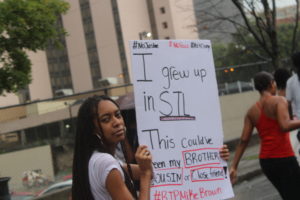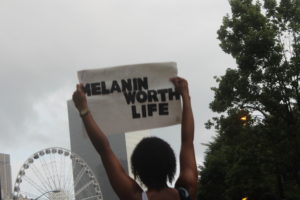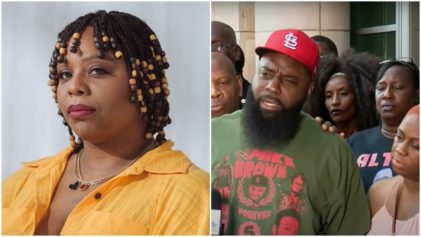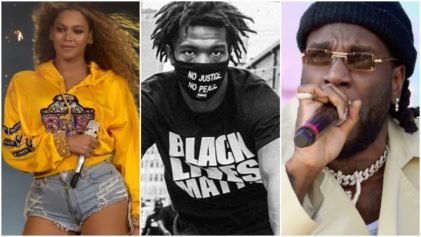After days of protests all across the nation, Monday brought Atlanta’s first massive protest in honor of Michael Brown, the unarmed teen who was shot and killed by a police officer in Ferguson, Missouri.
It was not even 5 p.m. yet when people began gathering outside the CNN Center in preparation for the march, which was not scheduled to begin until 7 p.m.
When those two hours were up, the streets of downtown Atlanta were packed.
They were not just packed with demonstrators and signs; they were filled from sidewalk to sidewalk with passion, righteous anger, pure energy and an unquenchable thirst for justice.
Protesters were dressed in business casual attire and graduation gowns as they begged the question, “Just how nice do we have to look in order to look innocent?”
In the midst of the unending sea of people, the environment seemed unfamiliar.
In mainstream media, these protests and marches look chaotic. Headlines scream that they are not peaceful, and they are labeled as unruly riots.
But as I stood in the center of thousands of people, I heard cheering, laughing, singing and joking. I felt the passionate anger toward injustice, but I saw smiles and unity. I knew these people were fed up; you could hear it as they chanted throughout the entire march, but they were also hopeful.

“Hands up. Don’t shoot,” they chanted.
“Black by nature, Brown by choice,” they sang.
“I am Mike Brown,” they declared.
This was not just a push for justice anymore; it was a celebration of the fact that this time things would be different.
It wasn’t long before dark storm clouds kissed the top Atlanta skyscrapers and winds picked up viciously.
One of the organizers of the march, Elle Lucier, stood barefoot in the soaking streets after her sandal strap broke.
The storm threatened to put an end to the march, but it only added fuel to the fire.
Lucier and the other organizers of the march turned around to see the massive crowd cheering and pushing through harsh winds and rain, and the 19-year-old activist described it as “beautiful” and “one of the most powerful moments of her life.”
There was an unspoken but understood competition with the storm.
This was the storm that the local meteorologists warned us about hours in advance, but we were the storm that our oppressors were warned about decades ago – and we were certainly the more powerful of the two.
When the thunder boomed over our heads, we cheered and threw our hands up.
When the lightning zipped across the dark skies, we dared it to try to outshine us.
When the rain began to pour so heavily that just seeing the next street sign was nearly impossible, we were reminded that as a strong unit we only needed to see the blurry silhouettes of those who marched directly in front of us.
At one point, the crowd stretched from Centennial Olympic Park down to Ivan Allen Jr. Boulevard and down to the doors of the bars that line Marietta Street.

This was not hashtag activism anymore. #ItsBiggerThanYou was not being restricted to Twitter and Instagram. It poured out into the streets of Atlanta in the form of mothers who were tired of burying their Black sons, Black fathers who were tired of being considered “lucky enough” to be alive, and people of all races who were simply fed up with injustice.
Lucier explained that the Atlanta Police Department could have “gone and taken a coffee and doughnut break because there was such a unity in that space and a sense of love and support and solidarity.”
Despite the sheer size of the crowd, no violence broke out and nobody was harmed.
#ItsBiggerThanYou is currently planning more events, demonstrations and panels to spark more national discussions about the injustices that continue to plague African-Americans today.


